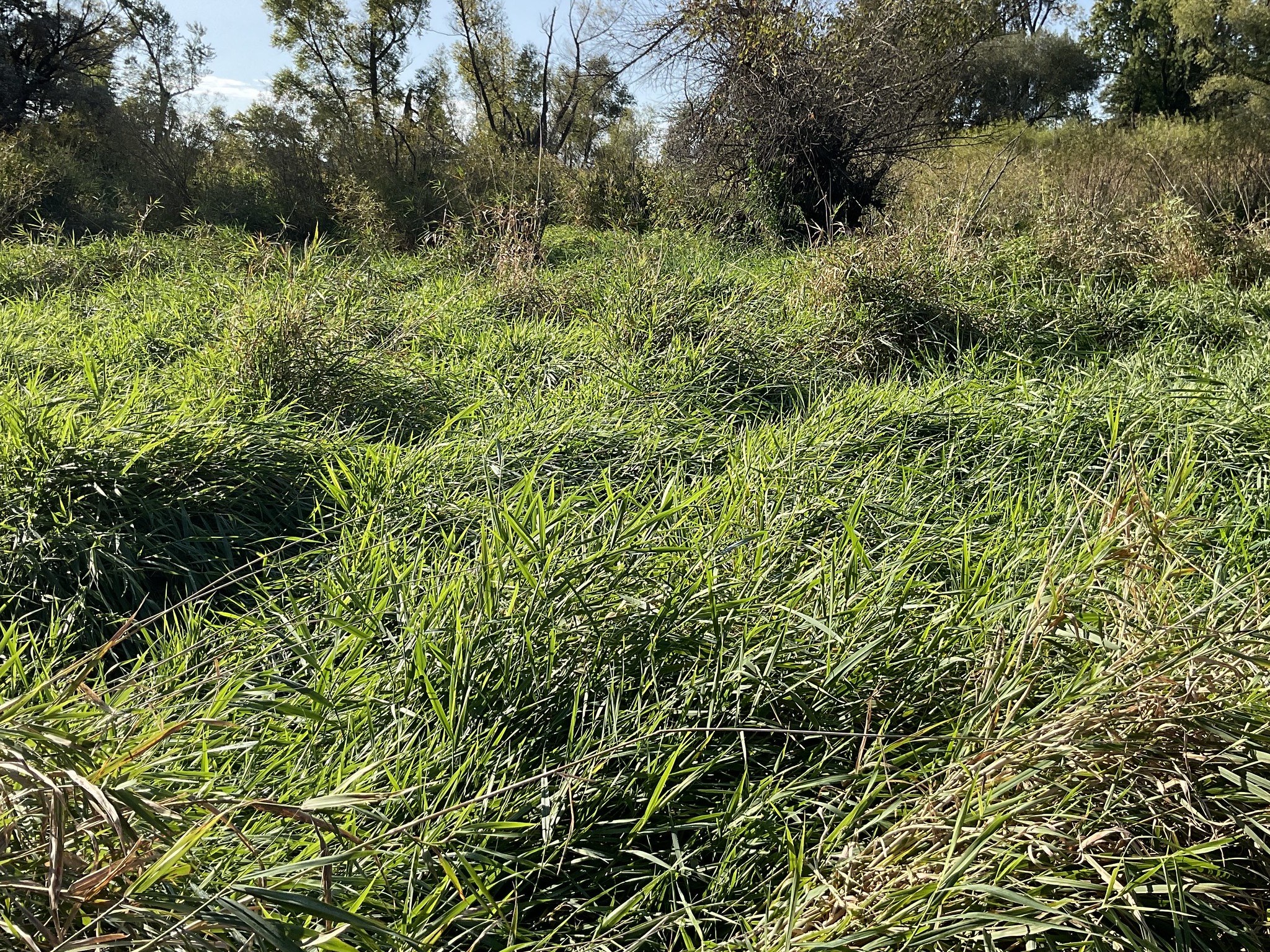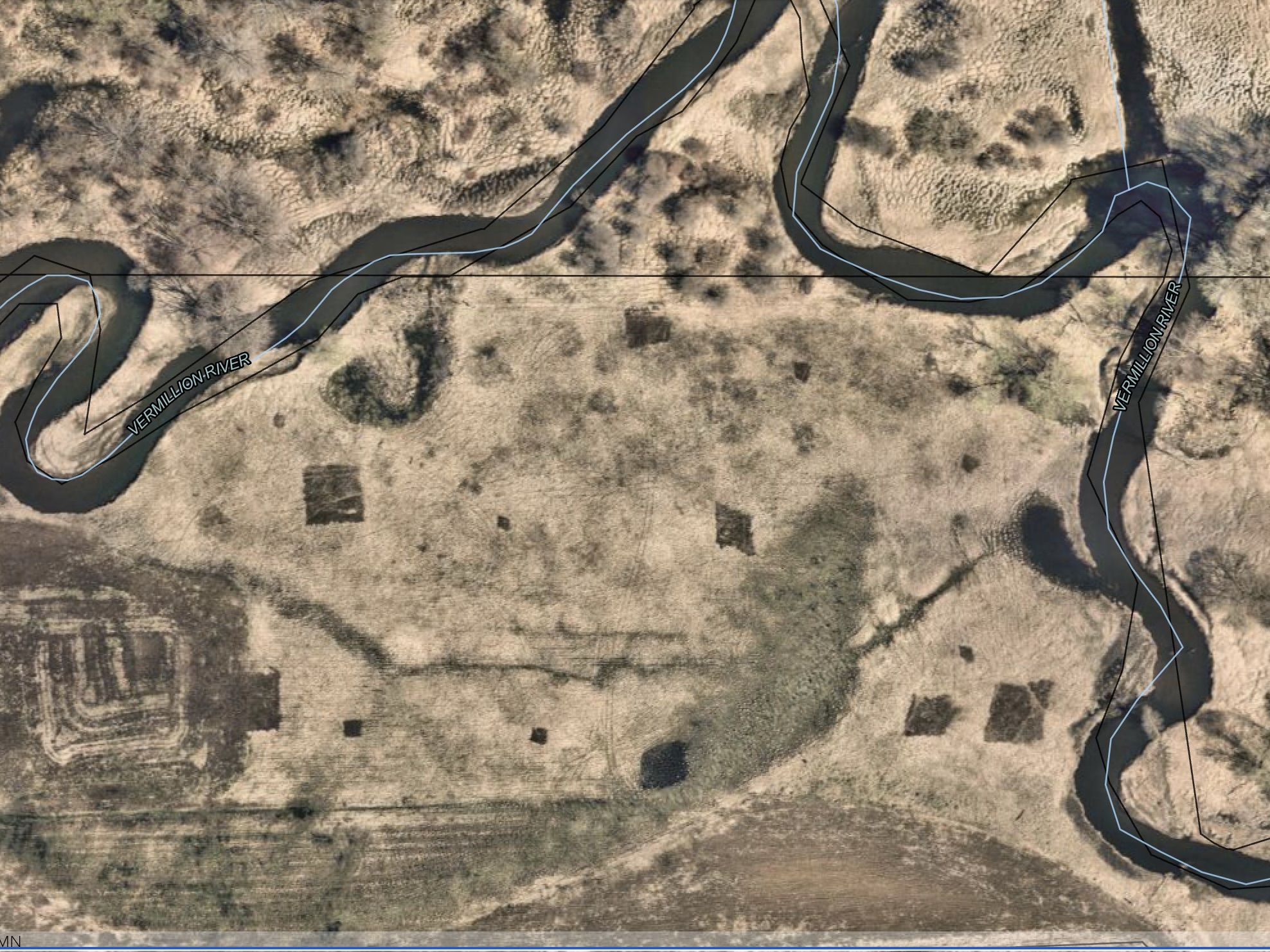Can pockets of habitat tip the scales in degraded wetlands?

Invasive reed canary grass forms dense monocultures in many wetlands across the Upper Midwest, including along the Vermillion River pictured here.
Fields of invasive reed canary grass can turn diverse wetlands into monocultures. Along the Vermillion River, a Mississippi River tributary, we're experimenting with ways to give more native wetland plants a better foothold through what we're calling pollinator nodes or 'habitat islands.'
Invasive reed canary grass: Is it native or non-native?
Reed canary grass (Phalaris arundinacea) has become ubiquitous in most Minnesota wetlands.
The plant was once thought to have been brought to the U.S. from Europe. But, University of Minnesota researchers recently discovered through genetic testing that most, if not all, reed canary grass populations along six major rivers in the state are actually native to Minnesota.
That said, even if reed canary has been part of our landscape for hundreds or thousands of years, it is quite invasive: The plant's stems and leaves collapse into a sprawling mat over the course of the growing season, which can be impenetrable to most other vegetation and wildlife.
Reed canary grass offers little in the way of food resources or nesting habitat, results in large areas devoid of habitat value, and is notoriously difficult to manage, but FMR ecologists are trying to do something about that along the Vermillion River.

Reed canary grass can form a dense and nearly impenetrable stand that has very limited habitat value.
The challenge of reed canary grass
Typical ways of removing reed canary grass from a wetland are resource-intensive. Treatment with herbicides requires many applications, which we generally like to avoid — especially near water. And even if reed canary can be diminished on a site, wetlands are often prone to re-invasion as new seeds are carried in from upstream sources during high water events.
On the Vermillion River, we're trying some novel approaches as we continue to look for ways to both reduce herbicide use and contribute to restoration research. These efforts will help us manage natural resources in new and effective ways and advance the entire field of restoration ecology.
Habitat islands to the rescue
Some tenacious wetland plants can persist even when it seems like reed canary grass has a monopoly on wetland real estate. Often, we see swamp milkweed, blue vervain, ironweed, bur marigold and willow in little pockets surrounded by reed canary grass. Because these plants represent a diversity of flower types and bloom throughout the growing season, they offer key food resources to a wide range of pollinators like some leafcutter and cuckoo bees.
At our restoration project within the Vermillion River Aquatic Management Area (or Vermillion AMA), we are trialing vegetation management techniques designed to reduce reed canary grass, reduce herbicide use, expand the populations of these native wetland plants and enhance pollinator habitat.
We first mapped 21 pockets of native plant communities in a 10-acre reed canary wetland on the banks of the Vermillion River. Next, we conducted a prescribed burn in late June 2022 when reed canary grass was just forming its flowers. The idea was to stress the reed canary by forcing it to resprout after it had used most of its stored energy to flower.
Reed canary features scaly rhizomes (modified stems) that create a dense mat across the ground and below the soil surface. Knowing that these stems would be able to regrow, we returned to our 21 pockets of native plants several times over the next two growing seasons. We suppressed reed canary grass there with weed torches and treated the grass and other wetland weeds with judicious herbicide applications. We also expanded some of these pockets to create patches of varying sizes, designed to give us insights into the patch size needed to best resist future invasion.
In November of this year, we seeded the managed pockets with a specialized seed mix containing native species that are competitive with reed canary grass.
Is our method working?
We'll be monitoring the effects of our management in the coming years, but one good sign is that our "habitat islands" can be seen in aerial imagery from 2023!
The squares in the wetland where we are working are seen as dark green blocks of various sizes in the image below.

In this aerial photo from the fall of 2023, the Vermillion River winds through fields of light brown reed canary grass. The darker squares are the experimental habitat islands where we're managing reed canary grass, and the darker brown at the bottom of the photo shows FMR's upland prairie restoration areas. (Photo by Nearmap US, Inc.)
In the future, we'll try to determine if the patch size of management has an effect on its long-term persistence, if the specialized seed mix establishes well, if the plants can become more abundant than reed canary and if pollinators are using the restoration.
The value of wetlands
Among many other ecosystem services, high-quality wetlands are especially beneficial to pollinators because of the diversity of flower types blooming throughout the growing season. Willows that are flowering as the snow is still melting and the grass-leaved goldenrods that bloom at the tail-end of fall bookend the long flowering period of wetland plants.
Wetlands are also often the only non-disturbed, non-developed areas within an urban or agricultural landscape, so they provide invaluable habitat to pollinators and other wildlife.
In addition to the unique habitats that wetland plants provide along the Vermillion, wetlands also soak up floodwater and then release stored water during times of drought. Wetland plants absorb and transform nutrients and other pollutants as water flows through. This filtered water improves water quality — in this case, in the Vermillion River as it makes its way to the Mississippi River about 20 miles downstream.
Stay tuned
We'll be keeping a close eye on these habitat islands over the next few years and hope to capture changes through drone imagery as the wetland continues to change. Look for updates next summer!
You can also join us as a volunteer to improve and restore habitat across the metro area starting in April.